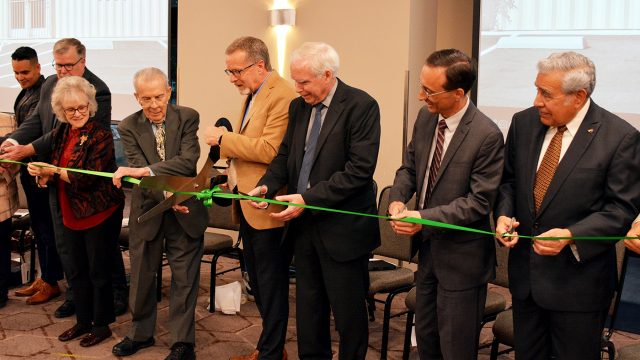Carson v. Makin and aid to religious schools

This week the Supreme Court decided, in the case of Carson v. Makin, that the state of Maine could not provide tuition aid to students at rural private schools without also sending that aid to students at private religious schools.
What are we to think of this decision? Is it a “a vindication of the right of religion and religious people to be free from discrimination,” as many of our friends on the political and religious right claim? Or is “the sky falling on the constitutional separation-of-church-and-state as well as genuine religious freedom,” as our friends on the political and ideological left assert?
Which assessment is more accurate? How should Adventists—with strong commitments to Christian education as well as religious freedom and the separation of church and state—think about this decision and its implications? Given the complexity and challenges of our times, I think that anyone who claims there is a simple and obvious way to view this decision—whether as a resounding victory for religious freedom or another body blow to the separation of church and state—is probably mistaken.
Carson v. Makin: Preventing Religious Discrimination?
First, a quick overview of the Carson case and what was decided. The state of Maine has large rural parts to it, about half the state, where there is not sufficient population to support a public secondary school. In these areas, the state has created a tuition program that allows parents to designate some private secondary school for the state to send tuition payments to on their behalf. The private schools must be accredited by state-approved agencies and, since 1981, must be “nonsectarian,” or non-religious, schools. The state defined a sectarian school as one not merely affiliated or connected with a church in some way, but also one that actually “promotes the faith or belief system with which it associated and/or presents the material taught through the lens of this faith” (4).
Prior to 1981, Maine citizens could ask for these payments to be sent to religious schools. But in that year, the Maine attorney general decided that under Supreme Court precedent, such payments to religious schools would violate the Establishment Clause. About two decades later, however, the Supreme Court made it clear that such parent-directed payments to religious schools were acceptable under the Constitution. In the 2002 case of Zelman v. Harris, the Court ruled that state-funded vouchers could go to religious schools, as long as the “government aid to religious schools” occurred “wholly as a result of [the parents’] own genuine and independent private choices.”
Shortly after, Maine reconsidered and could have changed its mind about the limits on aid to religious schools. The state decided, however, to continue preventing such aid from going to sectarian schools. Maine was able to do this because of a Supreme Court doctrine called “play in the joints.” This means that not everything allowed by the Establishment Clause is not required under the Free Exercise Clause. This is illustrated well by the Zelman student voucher case. There, the Supreme Court said that if a state had a voucher program, it could include religious schools if it desired, but that it did not have to include religious schools. In other words, even though the Constitution allowed for such payments, it was not discriminatory to only provide the vouchers to secular private schools.
This play-in-the-joints notion allowed states to experiment with their own balance between church and state respecting certain fundamental religious freedoms, while also steering clear of entanglements with church and state they wished to avoid. The play-in-the-joints doctrine was initially called into question by the Court in a couple of cases in the few years before Makin. The first, Trinity Lutheran in 2017, involved a rubberized playground surface that the state of Missouri was making available to all private schools, except for religious schools. The Court ruled that the Free Exercise Clause did not permit a state to “expressly discriminate against otherwise eligible recipients solely because of their religious character” (8).
Trinity Lutheran did not appear overly controversial, as it did not involve religious aid or money that could be put to religious use, but merely playground surfacing material. Why should religious children be exposed to greater peril of skinned knees and elbows on the playground than children in secular schools? It would seem to be a particularly hard-hearted secularist who insisted that the Constitution demanded, or even allowed, such a penalty.
But the next case to deal with this question, Espinoza from the state of Montana in 2020, dealt with the much broader question not of playground equipment but very fungible dollars and cents. Or at least tax credits, which in the end become very real dollars and cents. Montana’s programs for tax credits for donors to private schools excluded schools that were controlled in whole or in part by a church. The Court ruled that “a state need not subsidize private education,” but that “once a State decides to do so, it cannot disqualify some private schools solely because they are religious.” Once again, the Court decided that if the aid was not forbidden by the Establishment Clause, then it was required by the Free Exercise Clause that religious schools not be excluded.
In light of Zelman, Trinity Lutheran, and Espinoza, one might ask why the Carson case was even necessary? On what basis did Maine think that it could exclude religious schools from its program? The State argued that its program was different from these on a couple of quite narrow grounds. The first was that these earlier cases excluded schools merely because of their connection with churches, rather than because they were overtly religious in their practice and teaching. The second ground was that the Maine statute promised a free public education to all its children, and the statute called for the equivalent of a public education, not a religious or sectarian one.
The majority opinion made quick work of both these arguments. On the latter one about “public education,” it pointed out that the actual language of the statute called for tuition support at a private school, and did not actually require a “public” education. There were a variety of differences between public and private schools, such as the ability to not accept all students, and they did not need to administer the annual state assessment tests. The only aspect of “public” education that was being insisted on was the aspect of secularity, which was the aspect of private education that is especially protected by the Constitution.
As to the attempted distinction between religious affiliation and religious activity or programming, the Court noted that this was an artificial distinction, at least at the primary and secondary school level. As they put it, “Educating young people in their faith, inculcating its teachings, and training them to live their faith are responsibilities that lie at the very core of the mission of a private religious school” (16). The Court noted that any attempt to scrutinize religiously affiliated schools to determine if they were “too religious” would require close state monitoring of religious schools, and “raise serious concerns about state entanglement with religion.”
The Dissenters: The Constitutional Sky Is Falling?
The liberal minority of the Court believes that in the Carson decision the Court, in the words of dissenting justice Sotomayor, “continues to dismantle the wall of separation between church and state that the Framers fought to build” (Sotomayor, 1). Justice Breyer, who authored the main dissent, similarly accused the majority of paying “almost no attention to the” Establishment Clause, and “giving almost exclusive attention to the words” of the Free Exercise Clause (Breyer, 1).
The primary concern of the dissenters appeared to be the increased religious strife that they believed would come from allowing state funds and resources to be used for promoting religious education. As Breyer put it, “Here I simply note the increased risk of religiously based social conflict when government promotes religion in its public school system…. We are today a Nation with well over 100 different religious groups . . . and with greater religious diversity comes greater risk of religiously based strife, conflict, and social division. The Religion Clauses were written in part to help avoid that disunion” (Breyer, 5).
Breyer returned to this theme of social conflict and strife between religious groups a number of times throughout his opinion, and it seems to be the main practical reason for the dissenters’ objection to state funding going to religious schools (Breyer, 5, 9, 15, 16, 17). Sotomayor rather darkly characterized the majority opinion as heralding the end of a meaningful separation of church and state. “In 2017, I feared that the Court was ‘leading us to a place where the separation of church and state is a constitutional slogan, not a constitutional commitment.’ Today, the Court leads us to a place where the separation of church and state becomes a constitutional violation” (Sotomayor, 5).
But is the constitutional sky really falling because of this decision? Will the dark prophecies about the indirect funding of religion producing greater social strife come true? What about the concern that neither the majority or dissenters really touched on, that state funds could undermine and corrupt religious education? What if the state begins setting down requirements and regulations regarding the teaching of evolution, and secularist views of sexuality and gender, or prohibiting teaching about historic and institutional racism, as a condition for receiving public dollars? What then? Will religious schools compromise on their teaching and doctrine, and should they thus be legally prevented from taking the aid to preserve their religious and ideological purity?
Confessions of a Church-State Separationist
Twenty years ago I largely shared the concerns of the dissenters in this case. Coming from an Adventist heritage that took the separation of church and state seriously, I saw the specter of strings and compromise attached to state funds, as well as the social divisions and strife that Justice Breyer has predicted. Such was the certainty and public prominence of my position that I was invited as a young lawyer to participate in a public debate at the National Press Club in Washington, D.C. to discuss the Zelman decision when it was decided. I was pitted against the lawyer for the Catholic Bishops, who argued that vouchers were good for religious education. I argued that they might well be a threat, and could undermine the very values and ideals that made religious education valuable and unique. (The transcript of that debate is still preserved at this location by the Pew Research Center.)
But now, twenty years later, I’m not so sure of my position in opposing Zelman. And it is not just that I have changed my views on that matter; but that the society in which we live has rather dramatically changed. I do not believe that my core principles have changed, but I believe that my application has changed in response to the changing times in which we live. Two decades ago, it was still possible to talk about religiously neutral public school spaces, but is that really possible any longer? With the rise of secular sexual and gender ideologies, revised views of the family, the continued rejection of all but the most materialistic explanation for the origins of life and humanity, and opposing views of human nature on issues ranging from critical race theory to feminist ideology, can public schools really be described as religiously neutral places?
And it is on this point that I think Justice Breyer may not see the elephant in the room—the current existence of massive social strife over basic, metaphysically rooted social and human values. Social strife over religious and metaphysical ideologies is not, I propose, a remote future risk; rather, it is an overwhelming present social and cultural reality in our country. It has largely defined and driven the political and social strife we have seen over the past several years, if not the last decade or two.
The strife is not so much between competing religious denominations, sects, and faiths as we have traditionally thought of it. Rather, there is one great conflict, a great, ongoing, roiling strife between a metaphysic based on a materialist, humanist, evolutionary view of life and humanity versus almost all the traditional faiths and religions that subscribe to some set of values based on human nature created in the image of the divine. Currently, instead of being neutral in this debate, the state has largely placed its great weight and resources squarely behind the secular humanist version of creation, anthropology, family, gender, sexuality, racial origins, and so on.
Once this larger picture is understood, there is a reasonable argument to be made that providing state resources to fund educational ideologies, based on the free and independent choices of parents, may well reduce social conflict. Currently, in many states parents are forced to send their children to schools based on, for many of them, an alien worldview that rejects many of their deepest faith commitments, practices, and teachings.
Surely giving such parents an option to use state resources (which, remember, is based in good part on their own tax payments) to select an education for their children that meets basic state curricula standards, but does so in the context of a faith and belief system that is consistent with their own, may well reduce strife. Would this not help abate the anxiety that the zero-sum struggles for survival and even existence that our public political debates have too often become?
And what about the possible corrupting effect of this state aid on religion? Isn’t that for religious people and institutions to consider and worry about? Should people and groups be legally excluded from public resources because it may change them? Should not they have the ability to make that choice?
Three thousand years ago, the book of Proverbs advised, “When you sit down to eat with a ruler, observe carefully what is before you, and put a knife to your throat if you are … given to appetite. Do not desire his delicacies, for they are deceptive food” (Proverbs 23:1-3, NKJV). I have always been intrigued by the fact that the proverb does not say, “Don’t eat with a ruler.” Rather, the instruction is to be careful not to overindulge, to watch your appetites.
The implication is that when these resources can be used wisely and carefully, it is appropriate to use them. Adventist pioneer and leader Ellen White, who helped craft Adventist thinking on what an appropriate separation of church and state should look like, agreed with this. She wrote that “the Lord still moves upon the hearts of kings and rulers in behalf of His people, and it becomes those who are so deeply interested in the religious liberty question not to cut off any favors, or withdraw themselves from the help that God has moved men to give, for the advancement of His cause” (Testimonies to Ministers and Gospel Workers [Mountain View, CA: Pacific Press, 1923], 202).
Perhaps the decision in Carson will help pave the way for these words from the 19th century to find even greater fulfilment today, as the new opportunities provided by the Carson decision are carefully, deliberately, cautiously, and prayerfully considered by people and institutions of faith.
Nicholas Miller is professor of church history at the Seventh-day Adventist Theological Seminary at Andrews University and serves as Senior Counsel for the Washington, D.C.-based law firm of Schaerr-Jaffe.








